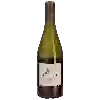
Winery Jean Claude MasOrigines Sauvignon Blanc
In the mouth this white wine is a powerful.
This wine generally goes well with vegetarian, poultry or lean fish.
Taste structure of the Origines Sauvignon Blanc from the Winery Jean Claude Mas
Light | Bold | |
Dry | Sweet | |
Soft | Acidic |
In the mouth the Origines Sauvignon Blanc of Winery Jean Claude Mas in the region of Languedoc-Roussillon is a powerful.
Food and wine pairings with Origines Sauvignon Blanc
Pairings that work perfectly with Origines Sauvignon Blanc
Original food and wine pairings with Origines Sauvignon Blanc
The Origines Sauvignon Blanc of Winery Jean Claude Mas matches generally quite well with dishes of pasta, vegetarian or poultry such as recipes of leek pie, summer tuna quiche or piperade.
Details and technical informations about Winery Jean Claude Mas's Origines Sauvignon Blanc.
Discover the grape variety: Sauvignonasse
Would be the friulano - before 2007 called tocai friulano - from Veneto in Italy. It would be a distant relative of furmint and Jean-Michel Boursiquot (2019) states that it is the father or mother of chenin blanc. However, Sauvignonasse has nothing to do with Sauvignon Blanc, which it was once mixed with in the Sauternes region. It can be found in Italy, Chile, Argentina, Russia, ... practically more multiplied in France.
Last vintages of this wine
The best vintages of Origines Sauvignon Blanc from Winery Jean Claude Mas are 2017, 2018, 2016, 2015
Informations about the Winery Jean Claude Mas
The Winery Jean Claude Mas is one of of the world's great estates. It offers 148 wines for sale in the of Languedoc-Roussillon to come and discover on site or to buy online.
The wine region of Languedoc-Roussillon
Languedoc (formerly Coteaux du Languedoc) is a key appellation used in the Languedoc-Roussillon wine region of southern France. It covers Dry table wines of all three colors (red, white and rosé) from the entire region, but leaves Sweet and Sparkling wines to other more specialized appellations. About 75% of all Languedoc wines are red, with the remaining 25% split roughly down the middle between whites and rosés. The appellation covers most of the Languedoc region and almost a third of all the vineyards in France.
The word of the wine: Sarment
Vine shoot of the year.














